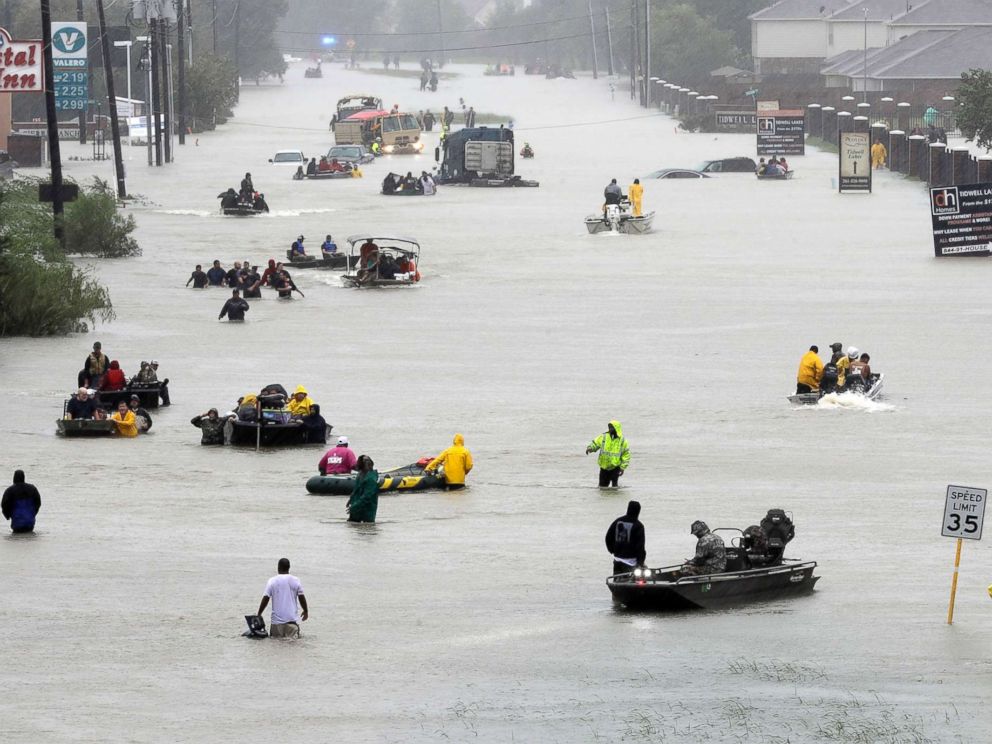A recent report examining the influence of climate change on hurricane risks in the U.S. shows that increased event frequency and sea level rise will have a significant impact on future damages.

Hurricane Harvey flooding in Houston – Photo from ABC News
The AIR Worldwide-led report, in collaboration with experts from re/insurer AXIS Capital Holdings Limited and the Brookings Institution, explores the potential impact of climate change on hurricane exposure in the U.S. by 2050, with a focus on financial losses to both residential and commercial properties.
Prior to 2020 and the arrival of a global pandemic, climate change discussion and action across the world had started to intensify.
Of course, the very real and urgent need to focus on mitigating the spread of COVID-19 and the development of a vaccine took centre stage in 2020, but the reality is that climate change is here to stay and will always be one of, if not the greatest threat to economies and societies of all shapes and sizes, from all corners of the world.
“Climate-related risks are among the most serious issues facing the world today and insurers have a critical role to play in mitigating them. Investing in ongoing research like today’s, in partnership with AIR and Brookings scholars, is essential,” commented Albert Benchimol, President and Chief Executive Officer (CEO) of AXIS.
“While climate change is likely to affect hurricanes in multiple ways, the report highlights two important aspects: an increase in the frequency of the strongest storms, and additional storm surge flooding due to sea level rise,” he continued.
Leveraging catastrophe risk modeller AIR’s Hurricane Model for the U.S., the report looks at future hurricane-generated storm surge losses for areas around New York, Houston, and Miami, as indicators of the additional risk as a result of rising sea levels.
“The model features a catalog of simulated hurricane seasons, containing multiple events of different strength making landfall along the Gulf and Atlantic coastlines. The baseline catalog is developed to reflect today’s climate and AIR created a new set of catalogs that reflect both the frequency and severity changes resulting from the future climate,” explains the report.
Ultimately, the analysis finds that increased event frequency and sea level rise will have a meaningful impact on future damage. Specifically, the report claims that the growth in the number of stronger storms, and landfalling storms overall, raises modelled losses by as much as 20%, with even larger changes in areas such as the Gulf and Southeast coasts.
The extremely active 2020 Atlantic hurricane season broke records both in terms of the number of storm formations and also the number of landfalls. However, for insurers and reinsurers, losses from wind and surge damage is determined by where the landfall actual occurs and the path of the storm once it interacts with land, with more storms and landfalls not necessarily resulting in higher losses.
According to the report, by 2050 the impacts from sea level rise could raise storm surge losses by anywhere from one-third to a factor of almost two, with even larger impacts possible when combined with an increase in the number of major storms.
Furthermore, this might not even tell the full story as the report is based on analysis that holds property exposure constant at today’s levels, when coastal exposure is expanding at a 4% annual rate and likely to continue growing in the future.
Despite the risks and elevated exposure to both wind and surge damage, in many parts of the world, migration to coastal areas is on the rise alongside asset values, meaning that more and more individuals and their assets are potentially more exposed to the impacts of climate change.
“With more intense hurricanes making landfall, and storm surges from more strong storms on top of a higher sea level, the results presented in this study are only the first step. Additional research into a wider range of impacts is necessary to complete what is surely a more complex picture, particularly related to how risk may change geographically,” said Dr. Peter Sousounis, vice president and director of climate change research, AIR Worldwide.
Bill Churney, President of AIR Worldwide, added: “The work follows on from related AIR research that considers the climatic effects on atmospheric perils responsible for multiple billion-dollar disasters that occur annually around the world.
“The modeling tools and data presented in this report can be extended for additional perils, including inland flooding, wildfires, and convective and extratropical storms. While there is considerable uncertainty in how extreme event risk may evolve in a warmer climate, these models are a practical approach to assessing the potential impacts.”


